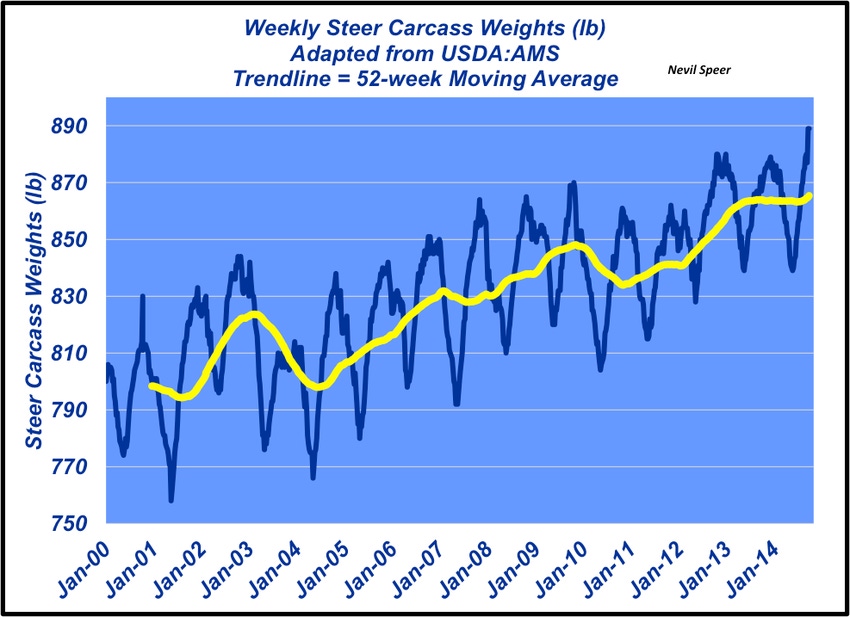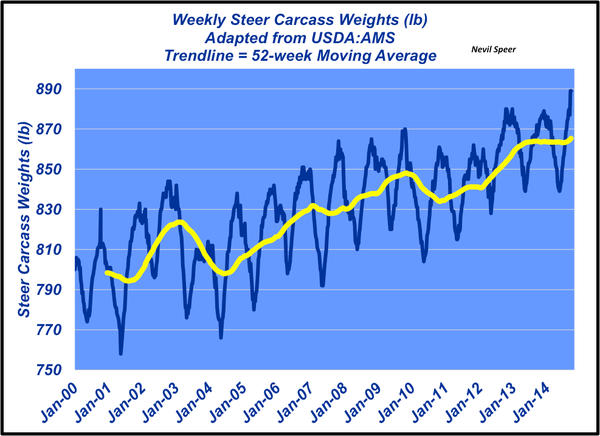There’s a distinct possibility carcass weights may surpass the 900-lb. mark yet this year.
October 9, 2014

During the last half of September, USDA’s weekly Actual Slaughter Under Federal Inspection reports revealed steer carcass weights shooting through the previous record of 880 lbs. that was first established in December 2012. The reports during the final weeks of September marked steer carcass weights sharply higher at 889 lbs. (with the 52-week moving average encroaching 870 lbs.). It should be noted that the weights reported are two weeks deferred; that is, weights reported this week represent the average from two weeks prior.
The sharp surge may be indicative of even bigger weights to come. Carcass weights typically peak during the months of October and November. As such, there’s a distinct possibility carcass weights may ratchet up from here and surpass the 900-lb. mark yet this year.
The new record-heavy weights aren’t surprising. As the accompanying chart illustrates, creating bigger, heavier carcasses over time has been a long-standing trend in the industry. There are several key drivers that haves made this occur: better genetics, more precise nutritional strategies, use of beta agonists, improved knowledge management, and better overall cattle management.

All that said, we also can’t overlook feedyard responsiveness to market incentives to make cattle bigger and heavier. That incentive has never been more pronounced with live prices working higher while cost-of-gains are declining. What’s more, heavier carcasses have largely offset declining inventory numbers over the years.
However, each time the beef industry establishes a new record for carcass weight, the enduring question arises around the whether the cattle are getting too big. At what point does the industry reach or exceed some maximum weight in which the trend begins to level off? How soon might that occur? What drivers might cause a leveling-off or reversal of the long-running trend?
Leave your thoughts in the comments section below.
You might also like:
4 Ways To Better Manage Your Employee Relationships
Where Will Land Prices Be In 2015? We Have Answers
Why Freeze Branding Is ID Of Choice For Many Commercial Ranches
How To Treat Lump Jaw Disease In Cattle
Buying A New Pickup? 10 Farm Trucks To Consider
Protect Your Ranch’s Reputation -- Precondition & Vaccinate Your Calves
80 Photos Of Our Favorite Calves & Cowboys
About the Author(s)
You May Also Like





